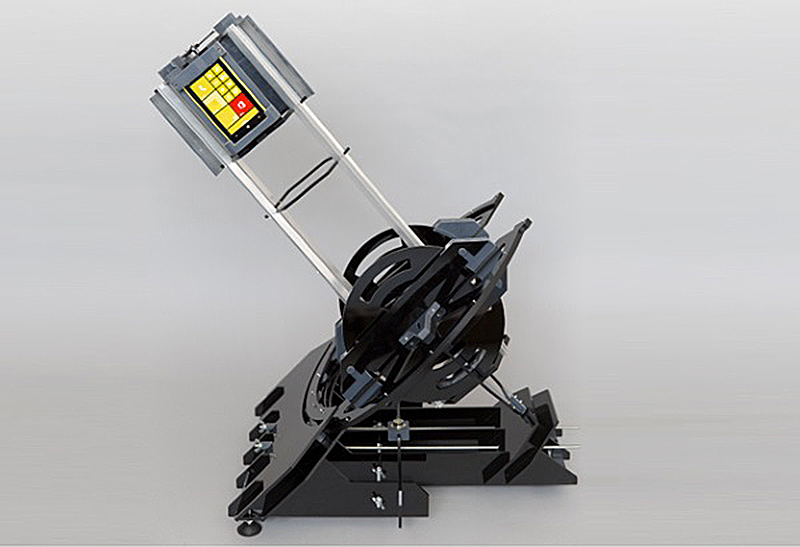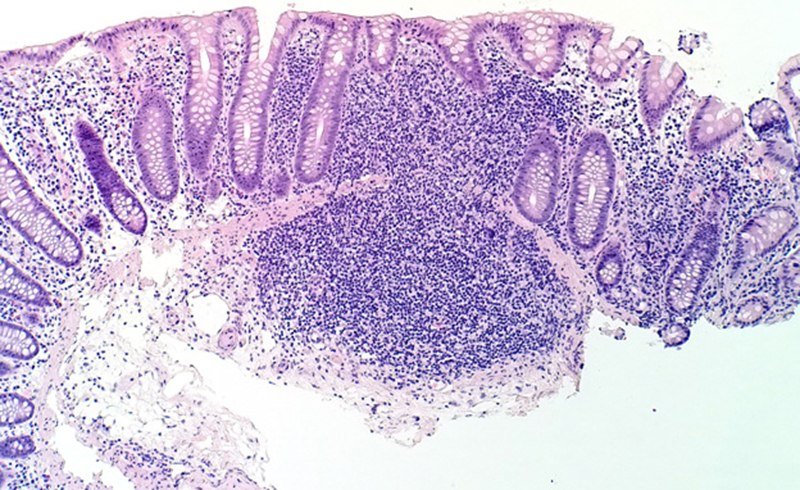Explore the big and small worlds with the Lumia 1020
Using a conventional device, such as a smartphone, for scientific (or at least scientific and educational) purposes is usually perceived skeptically. However, such an attitude is not always justified, and such projects as, for example, a quantum random number generator , created on the basis of a regular Nokia N9 smartphone, contribute to the destruction of this stereotype.

But not a single N9. This year we learned about two more interesting projects, the basis of which were our smartphones, or rather our camera phone Lumia 1020. And however funny this may sound, but the areas in which our mobile device is involved are in diametrically opposite directions: research of the micro-worlds and research space.
Like many other boys, at 10, James Parr, the founder of the Open Space Agency , looked at the stars at night and dreamed of visiting the farthest corners of the cosmos. Thirty years later, the stars came together in such a way that James realized his childhood dream. No, he did not become an astronaut, but nevertheless achieved his goal, having developed, in collaboration with Microsoft and a number of well-known astronomy specialists, the world's first automatic observatory, parts of which can be printed on a 3D printer.
')

At the heart of the device, called the "Ultrascope" (Ultrascope) is a Lumia 1020 c 41-megapixel camera. And it, according to the creator, should completely change the approach to astrophotography, providing an opportunity to make a high-quality picture of the starry sky right from the apartment window.
The details of the Ultrascop frame are created using a 3D printer, and then assembled by hand into a small construction with a height of 1 meter and a base width of 65 centimeters. Next on the design are fixed Lumia 1020, a system of mirrors, tuning drives and Arduino controlling them.

The principle of operation of the telescope is as follows: at the first stage, the position of the International Space Station is determined using a laptop running Windows. This data is sent to the Arduino computing platform for its positional configuration. After this comes the turn of Lumia, which takes pictures in high resolution and sends them to OneDrive for post-processing.

James Parr believes that the device can be used by anyone who is interested in exploring space, ranging from professional astronauts to young enthusiasts.
“We live in an amazing time,” notes James, “when mass consumer technologies make available to people such things that only a narrow circle of professionals could afford only a few years ago. Now amateur astronauts around the world can simply download the Ultrascope model over the Internet, print the details using a 3D printer and assemble the device manually. Insert your smartphone into your device and start an amazing journey. ”

At the moment, the project developers are actively urging everyone to participate in beta testing . 3D files for printing the telescope frame will soon be available for download on the official OSA website.
In the next 12-18 months, the release of new, more advanced models is planned. In the meantime, a team of designers and Microsoft developers are helping OSA with developing a custom application to work and control the telescope.
Leafing through the professional medical journal " Histopathology " (examination of body tissues), you least expect to meet with the article about the smartphone. However, this year the title with the phrase "Nokia Lumia 1020" appeared in this edition.

It is worth noting that this is not a promotional material, but a scientific note by John Graff and Mark Lee-Chen, researchers from the Department of Pathology of the University of California, in which they describe in detail how our smartphone’s 41-megapixel camera is used as a device for obtaining high-quality photomicrography, pictures taken using a microscope.
It may not seem obvious, but not every camera is suitable for this kind of research practice. To achieve high quality images, you need special tripods and long hours of fine tuning for each microscope. Sometimes experts use standard cameras or cameras of traditional smartphones, but in most cases the pictures are blurry and not detailed enough.
The accuracy and clarity of the pictures here plays an extremely important role. For example, the size of some bacteria is only a few microns, that is, smaller than the size of red blood cells. This is where the distinctive features of the Lumia 1020 came in: high resolution and the possibility of post-processing (in this case, increasing images) without loss of quality. According to the scientists themselves, working with high-definition color images allows you to see important small details, including the shape of the cells, their color, whether it is infected with an infection, and so on. So, for example, in one of the complex clinical cases described in the article, it was thanks to high-quality images taken on a smartphone that scientists were able to identify a rare type of bacteria and prescribe the correct treatment.

It is noteworthy that in the framework of the ten-month field research only JPEG images were used, and the authors rightly believe that shooting in digital negative mode (RAW DNG) can provide even more detailed images.
Also, doctors emphasized the optical stabilization system, which allowed them to take pictures through the barrel of the eyepiece of the microscope directly from the hands. This means that in conditions of limited time, medical workers will be able to do research as efficiently as possible even with several microscopes at the same time.
And we also write in: Geektimes | Twitter | VKontakte | Facebook | Google+

But not a single N9. This year we learned about two more interesting projects, the basis of which were our smartphones, or rather our camera phone Lumia 1020. And however funny this may sound, but the areas in which our mobile device is involved are in diametrically opposite directions: research of the micro-worlds and research space.
"Ultrascope" by James Parr
Like many other boys, at 10, James Parr, the founder of the Open Space Agency , looked at the stars at night and dreamed of visiting the farthest corners of the cosmos. Thirty years later, the stars came together in such a way that James realized his childhood dream. No, he did not become an astronaut, but nevertheless achieved his goal, having developed, in collaboration with Microsoft and a number of well-known astronomy specialists, the world's first automatic observatory, parts of which can be printed on a 3D printer.
')

At the heart of the device, called the "Ultrascope" (Ultrascope) is a Lumia 1020 c 41-megapixel camera. And it, according to the creator, should completely change the approach to astrophotography, providing an opportunity to make a high-quality picture of the starry sky right from the apartment window.
The details of the Ultrascop frame are created using a 3D printer, and then assembled by hand into a small construction with a height of 1 meter and a base width of 65 centimeters. Next on the design are fixed Lumia 1020, a system of mirrors, tuning drives and Arduino controlling them.

The principle of operation of the telescope is as follows: at the first stage, the position of the International Space Station is determined using a laptop running Windows. This data is sent to the Arduino computing platform for its positional configuration. After this comes the turn of Lumia, which takes pictures in high resolution and sends them to OneDrive for post-processing.

James Parr believes that the device can be used by anyone who is interested in exploring space, ranging from professional astronauts to young enthusiasts.
“We live in an amazing time,” notes James, “when mass consumer technologies make available to people such things that only a narrow circle of professionals could afford only a few years ago. Now amateur astronauts around the world can simply download the Ultrascope model over the Internet, print the details using a 3D printer and assemble the device manually. Insert your smartphone into your device and start an amazing journey. ”

At the moment, the project developers are actively urging everyone to participate in beta testing . 3D files for printing the telescope frame will soon be available for download on the official OSA website.
In the next 12-18 months, the release of new, more advanced models is planned. In the meantime, a team of designers and Microsoft developers are helping OSA with developing a custom application to work and control the telescope.
Photomicrography of John Graff and Mark Lee-Chen
Leafing through the professional medical journal " Histopathology " (examination of body tissues), you least expect to meet with the article about the smartphone. However, this year the title with the phrase "Nokia Lumia 1020" appeared in this edition.

It is worth noting that this is not a promotional material, but a scientific note by John Graff and Mark Lee-Chen, researchers from the Department of Pathology of the University of California, in which they describe in detail how our smartphone’s 41-megapixel camera is used as a device for obtaining high-quality photomicrography, pictures taken using a microscope.
It may not seem obvious, but not every camera is suitable for this kind of research practice. To achieve high quality images, you need special tripods and long hours of fine tuning for each microscope. Sometimes experts use standard cameras or cameras of traditional smartphones, but in most cases the pictures are blurry and not detailed enough.
The accuracy and clarity of the pictures here plays an extremely important role. For example, the size of some bacteria is only a few microns, that is, smaller than the size of red blood cells. This is where the distinctive features of the Lumia 1020 came in: high resolution and the possibility of post-processing (in this case, increasing images) without loss of quality. According to the scientists themselves, working with high-definition color images allows you to see important small details, including the shape of the cells, their color, whether it is infected with an infection, and so on. So, for example, in one of the complex clinical cases described in the article, it was thanks to high-quality images taken on a smartphone that scientists were able to identify a rare type of bacteria and prescribe the correct treatment.

It is noteworthy that in the framework of the ten-month field research only JPEG images were used, and the authors rightly believe that shooting in digital negative mode (RAW DNG) can provide even more detailed images.
Also, doctors emphasized the optical stabilization system, which allowed them to take pictures through the barrel of the eyepiece of the microscope directly from the hands. This means that in conditions of limited time, medical workers will be able to do research as efficiently as possible even with several microscopes at the same time.
And we also write in: Geektimes | Twitter | VKontakte | Facebook | Google+
Source: https://habr.com/ru/post/240501/
All Articles